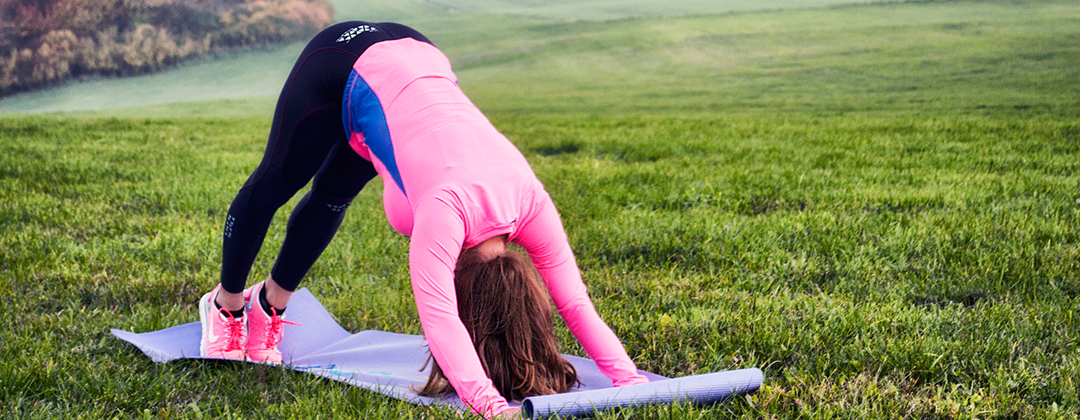
Many women have written to us asking whether it is safe for them to do yoga during pregnancy. Most pregnant women find that yoga has both emotional and physical benefits. However, they tend to be unsure about what yoga poses offers the most benefits and which yoga poses they as pregnant women should avoid.
How yoga helps pregnant women
Practicing yoga offer many health benefits for pregnant women. Research as shown that yoga helps pregnant women to develop good breathing techniques and to relax. Better breathing and relaxation will help pregnant women to better deal with the physical demands of pregnancy. The benefits of better breathing and relaxation will help during labor, birth and the early stages of motherhood. Yoga helps pregnant women to relieve stress associated with pregnancy. Pregnant women who have taken prenatal yoga class found it to be a great way to meet other soon to be moms and share their journey toward motherhood together.
Things pregnant women should be careful about when doing yoga
It you are attending a regular yoga class, tell your yoga instructor that you’re pregnant, and which trimester you’re in. If you’re attending a yoga class that is specifically geared to pregnant women, all the better.
After your first trimester, don’t do any yoga pose or asanas that can reduce blood flow to the uterus. This includes any yoga poses that involve you lying on your back. Such yoga poses can reduce blood flow to your uterus which is not good for the baby.
Don’t do yoga poses that require you to stretch your muscles too much. In particular, avoid doing yoga poses that stretches your abdominals. Being pregnant releases relaxin, which enables your uterus to expand, but this results in the softening of your connective tissues. The soften connective tissues means as a pregnant woman, you’re more susceptible to injuries including strains and pulls. Therefore, it’s best to avoid yoga poses that require strenuous stretching.
During your second trimester, your center gravity changes so it is important to keep your balance when doing yoga. If you are doing a standing yoga pose, we recommend that you do such standing poses with your heel to the wall or a stable chair to give you support. This will ensure that you avoid losing your balance and falling. You should always remember to keep yourself well supported to prevent injury to yourself and your baby.
Stay away from hot yoga or Bikram. Steer clear from hot yoga like the plague if you are pregnant. According to researchers, pregnant women working out in such an overheated room exposes their growing fetus to risk. The high heat could adversely affect the healthy development of your baby in the uterus. So hot yoga is a definite no no during pregnancy.
During yoga practice, its important when you bend forward, hinge from the hips, leading with the breastbone and extending the spine from the crown of the head down to the tailbone. This technique will give more space for your ribs to move and will make breathing easier.
During yoga poses, always keep your pelvis in a neutral position by engaging the abdominals and slightly tucking the tailbone down and in. Doing this will help to relax your buttocks muscle (your glutes) and hip flexors, and will reduce and prevent sciatic pain down the back of your leg, which is a common symptom in pregnant women. By keeping your pelvis in a neutral position and engaging you abdominals, you can prevent injury the connective tissue in your body that stabilizes your pelvis.
When you bend forward while seated, it’s a good idea to place a towel or yoga strap behind your feet and hold both ends. Avoid compression your abdomen by bending from your hips and lifting your chest. If you find this movement to be too difficult if your belly is too large, you can place a rolled-up towel under your buttocks to elevate the body, and spread your legs slightly to give your belly more room to move forward.
Avoid doing yoga pose that require deep twisting movement. If you doing a mild twisting yoga poses, be careful to avoid putting any pressure on your abdomen. You can twist more from your shoulders and back rather than your waist.
Be mindful of your limitations. It’s a good idea to be in tune to your body. Listen to what your body is telling you. Don’t do anything that feels uncomfortable. When you feel the even the slightest discomfort, stop. This will ensure that you don’t do anything that will harm you and your baby. If necessary, you can modify the yoga pose so that you are completely comfortable. Good yoga instructors will always help to customize the yoga class to suit pregnant women.
Safe yoga poses for pregnant women
Butterfly stretch
Cat-Cow
Cobra (in the first trimester, if you feel comfortable doing this face-down pose)
Seated forward bend (with modifications as described above)
Side angle pose
Standing forward bend (with chair for modification)
Triangle pose (with chair for modification)
Yoga poses that are dangerous to pregnant and should be avoided during pregnancy
Backbends
Balancing poses on one leg (unless supported by chair or wall)
Camel
Handstands
Headstands
Upward bow

